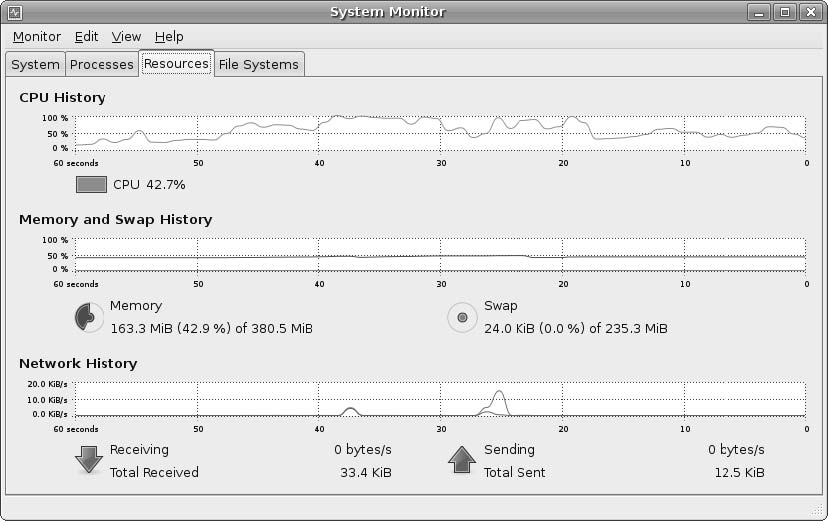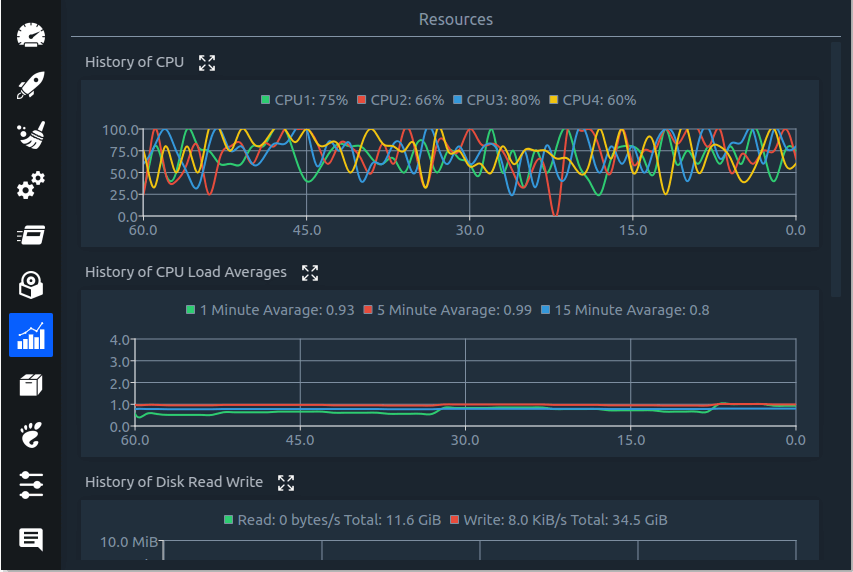

- Linux system monitor gui not installed serial#
- Linux system monitor gui not installed full#
- Linux system monitor gui not installed software#
For this article I decided on using my main PC, which runs openSUSE Tumbleweed. Your daily driver, a Raspberry PI or a virtual machine. A Linux PC, ideally with desktop environment installed.Because of the separate TX and RX wires, data can travel in both directions as the same time, also referred to as full-duplex communication. These start- and stop-bits enable the receiving side to synchronize with the data stream. Meaning that a byte transfer actually consists of ten bits.
Linux system monitor gui not installed full#
To transfer a full byte, the transmitting side first send a logic low bit (start-bit), then the eight data bits and finally another logic low bit (stop-bit).
Linux system monitor gui not installed serial#
Serial communication consists of two wires, one for transmitting (TX) and one for receiving (RX) data. The bits travel at a predetermined speed, also known as the baudrate. It’s named serial because bits move serially through the communication line, meaning one bit after the other. A brief introduction to serial communicationĪ serial port offers a basic interface for communicating with external devices.
Linux system monitor gui not installed software#
I typically use this while debugging microcontroller software or to send commands to the firmware running on the microcontroller. This tutorial explains how you can use Linux to monitor the serial port communication data and even interact with it. On Linux it shows up as a teletype terminal (TTY) device such as /dev/ttyS0, /dev/ttyUSB0 or /dev/ttyACM0. No matter what method you use for connecting the RS232 device to your PC, it shows up as a serial device. That way you can directly connect the board to your PC using a standard USB cable. Even better, recent microcontroller designs include all the electronics for this on-board. Most PCs no longer ship with a serial port, but luckily you can purchase a low-cost RS232-to-USB adapter to connect the standardized RS232 SUB-D9 connector to your PCs USB port.

The RS232 level shifter adjusts the voltage levels of the UART peripheral’s TX and RX lines (TTL) to those specified by the RS232 specification. To communicate with such a device using your PC, its UART peripheral connects to your PCs serial port, with the help of an RS232 level shifter chip. UART enables these embedded devices to communicate serially with each other (RS232 / RS485 / Modbus), but also a PC. UART stands for Universal Asynchronous Receiver/Transmit. Think Arduino, Atmel AVR, Microchip PIC, STM32, etc.Īll microcontrollers still feature a UART subsystem. But who actually still needs a serial port in the day and age of USB? Typically those working with microcontroller based systems.

As did my modem for dialing-in to my Internet provider over the phone line. The mouse of my first PC connected to the serial port. In this article I’ll introduce you to few popular programs to monitor the serial port in Linux. Once connected, you might wonder: How do I monitor the serial port in Linux? Luckily several tools exist, both for the terminal and with a GUI. With the help of an RS232-to-USB adapter you can easily connect them to your PC. Although modern PCs no longer come with a physical serial port, plenty of devices still require RS232 serial communication to interact with them.


 0 kommentar(er)
0 kommentar(er)
